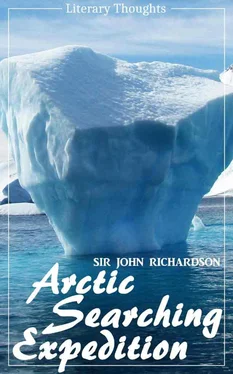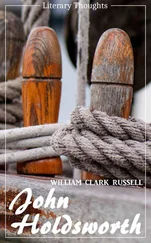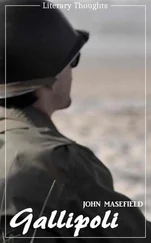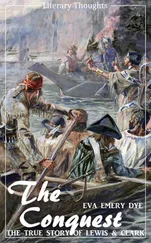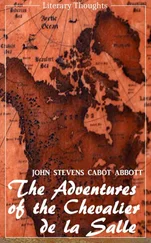Arctic Searching Expedition: A Journal of a Boat-Voyage through Rupert’s Land and the Arctic Sea, in Search of the Discovery Ships under Command of Sir John Franklin by Sir John RIchardson
Literary Thoughts Edition presents
Arctic Searching Expedition,
by Sir John Richardson
Transscribed and Published by Jacson Keating (editor)
For more titles of the Literary Thoughts edition, visit our website: www.literarythoughts.com
All rights reserved. No part of this edition may be reproduced, stored in retrieval system, copied in any form or by any means, electronic, mechanical, photocopying, recording or otherwise transmitted without written permission from the publisher. You must not circulate this book in any format. For permission to reproduce any one part of this edition, contact us on our website: www.literarythoughts.com.
This edition is licensed for your personal enjoyment only. It may not be resold or given away to other people. If you would like to share this book with another person, please purchase an additional copy for each recipient. If you’re reading this book and did not purchase it, or it was not purchased for your use only, then please return to Amazon and purchase your own copy of the ISBN edition available below. Thank you for respecting the efforts of this edition.
ROUTE ASSIGNED TO THE EXPEDITION UNDER COMMAND OF SIR JOHN FRANKLIN.—NAMES OF THE OFFICERS.—EREBUS AND TERROR.—DATE OF ITS SAILING.—LAST LETTERS.—SIR JOHN FRANKLIN'S LAST OFFICIAL LETTER.—LAST SIGHT OF THE EXPEDITION.—SIR JOHN ROSS PROPOSES A SEARCH.—DISCUSSION OF VARIOUS OPINIONS OFFERED RESPECTING THE FATE OF THE EXPEDITION.—PLANS OF SEARCH ADOPTED.—MAIN OBJECTS OF THE OVERLAND SEARCHING EXPEDITION.—INSTRUCTIONS FROM THE ADMIRALTY.
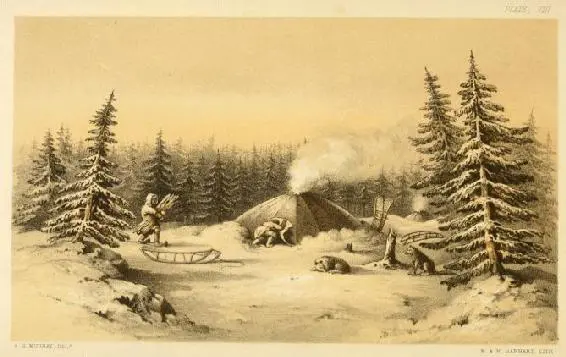
Her Majesty's government having deemed it expedient that a further attempt should be made for the accomplishment of a north-west passage by sea from the Atlantic to the Pacific, the "Erebus" and "Terror" were fitted out for that service, and placed under the command of Captain Sir John Franklin, K. C. H. He was directed by the Admiralty instructions, dated on the 5th of May, 1845, to proceed with all despatch to Lancaster Sound, and, passing through it, to push on to the westward, in the latitude of 74½°, without loss of time or stopping to examine any openings to the northward, until he reached the longitude of Cape Walker, which is situated in about 98° west. He was to use every effort to penetrate to the southward and westward of that point, and to pursue as direct a course for Beering's Straits as circumstances might permit. He was cautioned not to attempt to pass by the western extremity of Melville Island, until he had ascertained that a permanent barrier of ice or other obstacle closed the prescribed route. In the event of not being able to penetrate to the westward, he was to enter Wellington Sound in his second summer.
He was further directed to transmit accounts of his proceedings to the Admiralty, by means of the natives and the Hudson's Bay Company, should opportunities offer; and also, after passing the 65th meridian, to throw overboard daily a copper cylinder, containing a paper stating the ship's position. It was also understood that he would cause piles of stones or signal-posts to be erected on conspicuous headlands at convenient times, though the instructions do not contain a clause to that effect.
NAMES OF THE OFFICERS.
The following officers joined the expedition:—
| Erebus. |
Terror. |
|
|
| Captain, Sir John Franklin, Kt. K. C. H. |
Capt., Francis R. M. Crozier. |
| Commander, James Fitzjames. |
Lieutenant, Edward Little. |
| Lieutenant, Graham Gore. |
Lieut., George H. Hodgson. |
| Lieut., H. P. D. Le Vesconte. |
Lieutenant, John Irving. |
| Lieut., James W. Fairholme. |
Ice-Master, Thomas Blanky. |
| Ice-Master, James Read. |
Surgeon, John S. Peddie. |
| Surgeon, Stephen S. Stanley. |
Assist.-Surgeon, A. M'Donald. |
| Paymaster, C. H. Osmer. |
Sec. Mr., Gillies A. Maclean. |
| Assist.-Surg., H. D. S. Goodsir. |
Clerk-in-Charge, Edward J. H. Helpman. |
| Sec. Master, Henry F. Collins. |
|
And the conjoined crews of the two ships amounted to 130 souls.
The "Erebus," originally built for a bomb-vessel, and therefore strongly framed, was of 370 tons measurement, and had been fortified, in 1839, after the most approved plan, by an extra or double exterior planking and diagonal bracing within, for Sir James C. Ross's antarctic voyage, from which she returned in 1843. Having been carefully examined and refitted for Sir John Franklin, she was considered to be as strongly prepared to resist the pressure of the ice as the resources of science, and the utmost care of Mr. Rice, the skilful master-shipwright who superintended the preparations, could ensure. The "Terror," of 340 tons, was also constructed for a bomb-vessel, and had the bluff form, capacious hold, and strong framework of that class of war vessels. When commanded by Captain Sir George Back, on his voyage to Repulse Bay in 1836-7, she had been beset for more than eleven months in drifting floes of ice, and exposed to every variety of assault and pressure to which a vessel was liable in such a dangerous position. In this severe and lengthened trial, the "Terror" had been often pressed more or less out of the water, or thrown over on one side, and had, in consequence thereof, sustained some damage, particularly in the stern post. All defects, however, were made good in 1839, when she sailed for the Antarctic Seas, under the command of Captain Crozier, the second officer of Sir James C. Ross's expedition. She was again examined, and made as strong as ever, before Captain Crozier took the command of her a second time in 1845.
The best plans that former experience could suggest for ventilating and warming the ships in the winter were adopted, and full supplies of every requisite for arctic navigation were provided, including an ample stock of warm bedding, clothing, and provisions, with a proportion of preserved meats and pemican.
The expedition sailed from England on the 19th of May, 1845, and, early in July, had reached Whalefish Islands, near Disco, on the Greenland coast of Davis's Straits, where, having found a convenient port, the transport which accompanied it was cleared and sent home to England, bringing the last letters that have been received from the officers or crew. The following extract of a letter, from Lieutenant Fairholme, of the "Erebus," will serve to show the cheerful anticipation of success which prevailed throughout the party, and the happy terms on which they were with each other:—
"We have anchored in a narrow channel between two of the islands, protected on all sides by land, and in as convenient a place for our purpose as could possibly be found. Here we are with the transport lashed alongside, transferring most actively all her stores to the two ships. I hope that this operation will be completed by to-morrow night, in which case Wednesday will be devoted to swinging the ships for local attraction, and I suppose Thursday will see us under way with our heads to the northward. We have had the observatory up here, on a small rock on which Parry formerly observed, and have got a very satisfactory set of magnetic and other observations. Of our prospects we know little more than when we left England, but look forward with anxiety to our reaching 72°, where it seems we are likely to meet the first obstruction, if any exists.
Читать дальше
